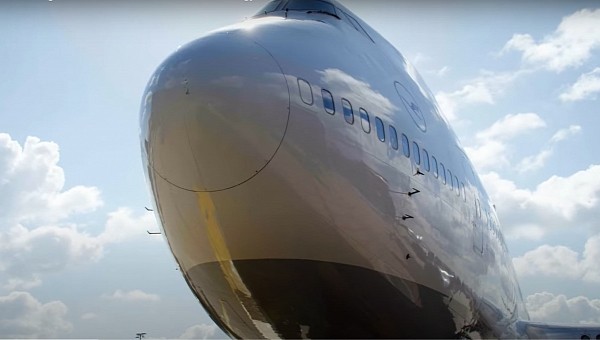In February of this year, autoevolution reported on a product called AeroSHARK, which was being applied to Swiss Air's fleet of Boeing 777-300ER airplanes that cuts down on a plane's drag in the skies, thus reducing fuel consumption.
It is uncanny how often nature plays a role in technological advancements... or is it? It should come as no surprise to anyone that nature is much better at adapting to adversity than humans, as we try and reinvent the wheel at every turn and ignore what we can learn from nature.
That being said, AeroShark is the exception here, as the folks at Lufthansa Technik learned something from nature that will save airlines a ton of money and reduce CO2 emissions over time. In addition, the technology has just received a Supplemental Type Certificate (STC) from the European Union Aviation Safety Agency (EASA) for select Boeing 777 models.
To remind everyone, AeroShark is an aerodynamic film applied to the aircraft's skin that lowers the drag coefficient as planes fly through the air. The film is similar in texture to that of a shark, with tiny riblets allowing air to flow more freely over the aircraft's surface just as a shark glides through the water.
Swiss Airlines applied the film to its 777-300ER variants and expects to save 400 tons (362,874 kgs) of kerosene and reduce CO2 BY 1,200 tons (1.08 million kgs) annually. The STC approval of Lufthansa's use of the film on its smaller 777F models will save 370 tons (335,658 kgs) of kerosene and a 1,170-ton (1.06 million kgs) reduction of CO2 emissions each year.
In order for the approval to be granted, the technology underwent stringent testing to ensure it did not negatively impact the airworthiness of the aircraft.
Beginning next month, Lufthansa and Swiss Airlines will begin to 'skin' their sub-fleets of 777Fs 777-300ERs. A Swiss plane already equipped with the skin was granted a temporary permit to fly from the Swiss Federal Office of Civil Aviation (FOCA) and has been flying since October. The plane played a key role in the testing that ultimately resulted in the STC approval.
To date, there has been no reported comment from Boeing, but that is sure to come at some point. It will be interesting to see how extensive the use of the film will become and whether or not it makes its way onto commercial passenger planes.
That being said, AeroShark is the exception here, as the folks at Lufthansa Technik learned something from nature that will save airlines a ton of money and reduce CO2 emissions over time. In addition, the technology has just received a Supplemental Type Certificate (STC) from the European Union Aviation Safety Agency (EASA) for select Boeing 777 models.
To remind everyone, AeroShark is an aerodynamic film applied to the aircraft's skin that lowers the drag coefficient as planes fly through the air. The film is similar in texture to that of a shark, with tiny riblets allowing air to flow more freely over the aircraft's surface just as a shark glides through the water.
Swiss Airlines applied the film to its 777-300ER variants and expects to save 400 tons (362,874 kgs) of kerosene and reduce CO2 BY 1,200 tons (1.08 million kgs) annually. The STC approval of Lufthansa's use of the film on its smaller 777F models will save 370 tons (335,658 kgs) of kerosene and a 1,170-ton (1.06 million kgs) reduction of CO2 emissions each year.
In order for the approval to be granted, the technology underwent stringent testing to ensure it did not negatively impact the airworthiness of the aircraft.
Beginning next month, Lufthansa and Swiss Airlines will begin to 'skin' their sub-fleets of 777Fs 777-300ERs. A Swiss plane already equipped with the skin was granted a temporary permit to fly from the Swiss Federal Office of Civil Aviation (FOCA) and has been flying since October. The plane played a key role in the testing that ultimately resulted in the STC approval.
To date, there has been no reported comment from Boeing, but that is sure to come at some point. It will be interesting to see how extensive the use of the film will become and whether or not it makes its way onto commercial passenger planes.






